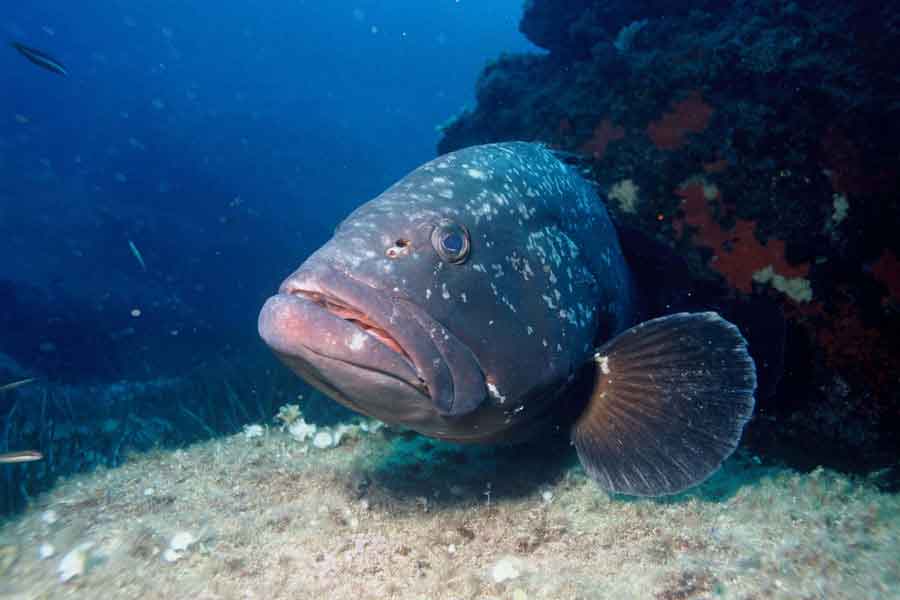
Considering that survival in the sea is a constant struggle and the law of «the big fish eats the small fish» is invariably fulfilled, it is logical to think that fewer animals will reach adulthood in any species. If we consider that adult individuals are the most suitable for reproduction, we will come to the conclusion that survival is in danger, threatening the extinction of the species.
Groupers have found a solution to this dilemma. This species exhibits sequential hermaphroditism, meaning it will change its sex as the animal grows. All groupers are born as functional females and will remain so until three years of age. From three to five years, they will be asexual, and from five years onwards, they will become functional males. Since a smaller number of males is required to fertilize the eggs of a larger number of females, the cycle of reproduction closes perfectly, resulting in more males than females in a given area, as fewer individuals reach adulthood. These adult males can grow up to two meters in length.
Groupers do not move in schools but live solitarily and take refuge in coral caves to avoid predator attacks. For years, these gentle and friendly animals were hunted by spearfishermen who found them inside their caves, making them easy prey. In this era when divers prefer taking photos over harpooning fish, groupers have become great friends of the seabed. They approach divers, accompany them during their visits, and gladly accept the food deposited into their large mouths.
«You cannot defend what you do not love, and you cannot love what you do not know.»

